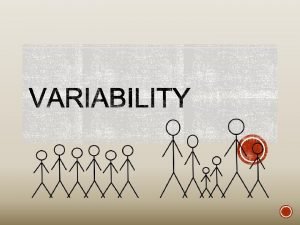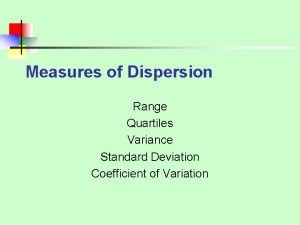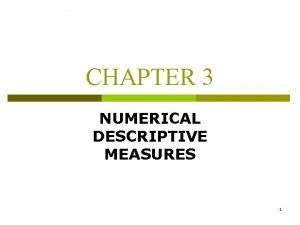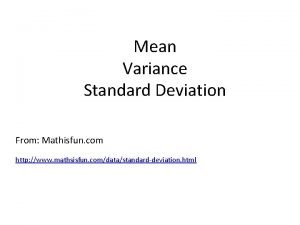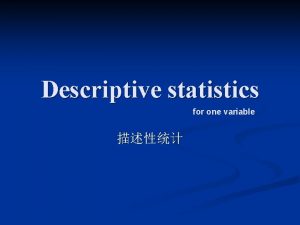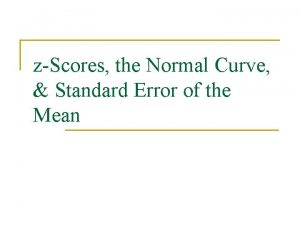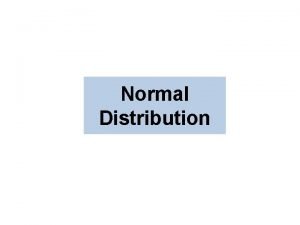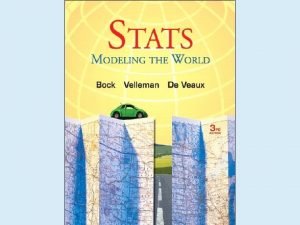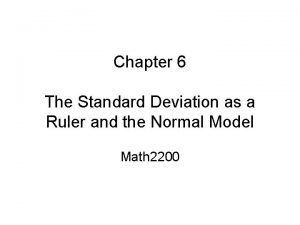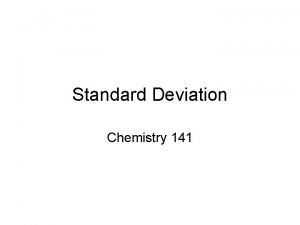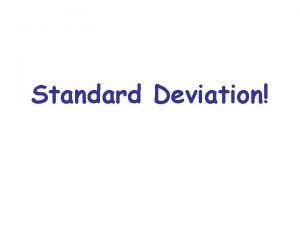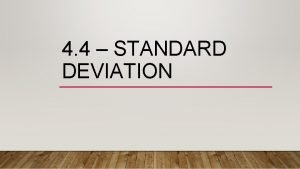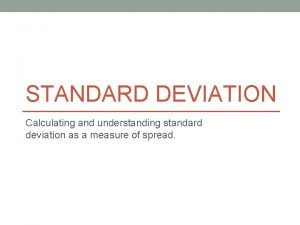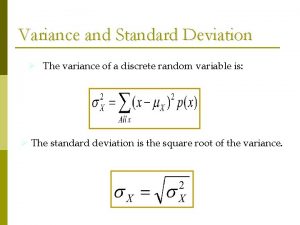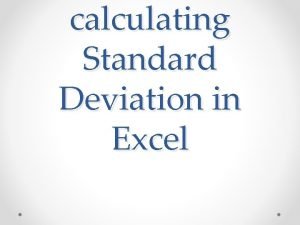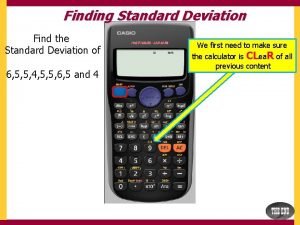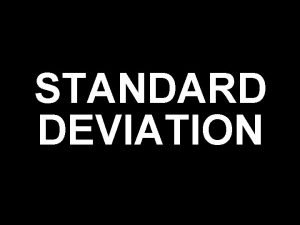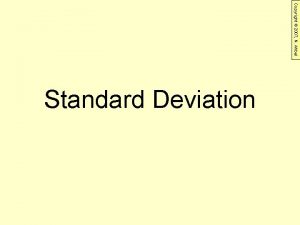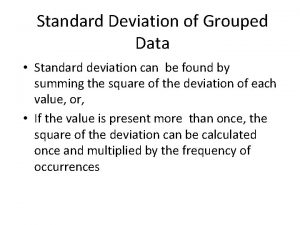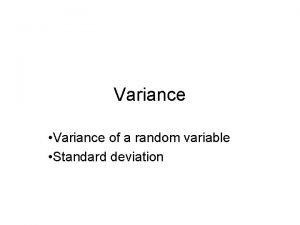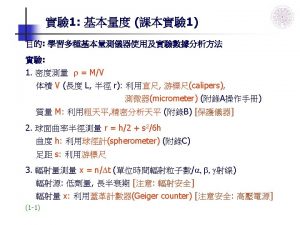Variance and Standard Deviation Variance a measure of

















- Slides: 17

Variance and Standard Deviation

Variance: a measure of how data points differ from the mean • Data Set 1: 3, 5, 7, 10 Data Set 2: 7, 7, 7 What is the mean and median of the above data set? Data Set 1: mean = 7, median = 7 Data Set 2: mean = 7, median = 7 But we know that the two data sets are not identical! The variance shows how they are different. We want to find a way to represent these two data set numerically.

How to Calculate? • If we conceptualize the spread of a distribution as the extent to which the values in the distribution differ from the mean and from each other, then a reasonable measure of spread might be the average deviation, or difference, of the values from the mean.

• Although this might seem reasonable, this expression always equals 0, because the negative deviations about the mean always cancel out the positive deviations about the mean. • We could just drop the negative signs, which is the same mathematically as taking the absolute value, which is known as the mean deviations. • The concept of absolute value does not lend itself to the kind of advanced mathematical manipulation necessary for the development of inferential statistical formulas. • The average of the squared deviations about the mean is called the variance. For population variance For sample variance

Score X 1 3 2 5 3 7 4 10 5 10 Totals 35 The mean is 35/5=7. ( )2

Score X ( 1 3 3 -7=-4 2 5 5 -7=-2 3 7 7 -7=0 4 10 10 -7=3 5 10 10 -7=3 Totals 35 )2

Score X ( 1 3 3 -7=-4 16 2 5 5 -7=-2 4 3 7 7 -7=0 0 4 10 10 -7=3 9 5 10 10 -7=3 9 Totals 35 38 )2

Score X ( 1 3 3 -7=-4 16 2 5 5 -7=-2 4 3 7 7 -7=0 0 4 10 10 -7=3 9 5 10 10 -7=3 9 Totals 35 38 )2

Example 2 Dive Mark Myrna 1 28 27 2 22 27 3 21 28 4 26 6 5 18 27 Find the mean, median, mode, range? mean median range 23 22 10 23 27 22 What can be said about this data? Due to the outlier, the median is more typical of overall performance. Which diver was more consistent?

Dive Mark's Score X ( )2 1 28 5 25 2 22 -1 1 3 21 -2 4 4 26 3 9 5 18 -5 25 Totals 115 0 64 Mark’s Variance = 64 / 5 = 12. 8 Myrna’s Variance = 362 / 5 = 72. 4 Conclusion: Mark has a lower variance therefore he is more consistent.

standard deviation - a measure of variation of scores about the mean • Can think of standard deviation as the average distance to the mean, although that's not numerically accurate, it's conceptually helpful. All ways of saying the same thing: higher standard deviation indicates higher spread, less consistency, and less clustering. • sample standard deviation: • population standard deviation:

Another formula • Definitional formula for variance for data in a frequency distribution • Definitional formula for standard deviation for data in a frequency distribution

The mean is 23 Myrna’s Score X f 28 1 27 3 6 1 115 5 ( )2 x f

Myrna’s Score X f ( 28 1 5 27 3 4 6 1 -17 115 5 )2 ( )2 x f

Myrna’s Score X f ( 28 1 5 25 27 3 4 16 6 1 -17 289 115 5 )2 ( )2 x f

Myrna’s Score X f ( )2 ( 28 1 5 25 25 27 3 4 16 48 6 1 -17 289 115 5 362 Variance = S 2 = 362 / 5 = 72. 4 Standard Deviation = 72. 4 = 8. 5 )2 x f round-off rule – carry one more decimal place than was present in the original data

Bell shaped curve • empirical rule for data (68 -95 -99) - only applies to a set of data having a distribution that is approximately bell-shaped: (figure pg 220) • 68% of all scores fall with 1 standard deviation of the mean • 95% of all scores fall with 2 standard deviation of the mean • 99. 7% of all scores fall with 3 standard deviation of the mean
 Variance formula in standard deviation
Variance formula in standard deviation Range variance and standard deviation
Range variance and standard deviation Range measure
Range measure Numerical descriptive statistics
Numerical descriptive statistics Math is fun.com
Math is fun.com Population mean absolute deviation
Population mean absolute deviation Merits and demerits of arithmetic mean
Merits and demerits of arithmetic mean Standard error and standard deviation
Standard error and standard deviation What weather instrument measures air temperature
What weather instrument measures air temperature Material yield variance formula
Material yield variance formula Standard error of mean
Standard error of mean Red mars
Red mars Standard deviation normal distribution
Standard deviation normal distribution Geometric mean in sas
Geometric mean in sas Chapter 6 the standard deviation as a ruler
Chapter 6 the standard deviation as a ruler Chapter 6 the standard deviation as a ruler
Chapter 6 the standard deviation as a ruler Standard deviation precision
Standard deviation precision Which three criteria do binomial experiments meet?
Which three criteria do binomial experiments meet?

